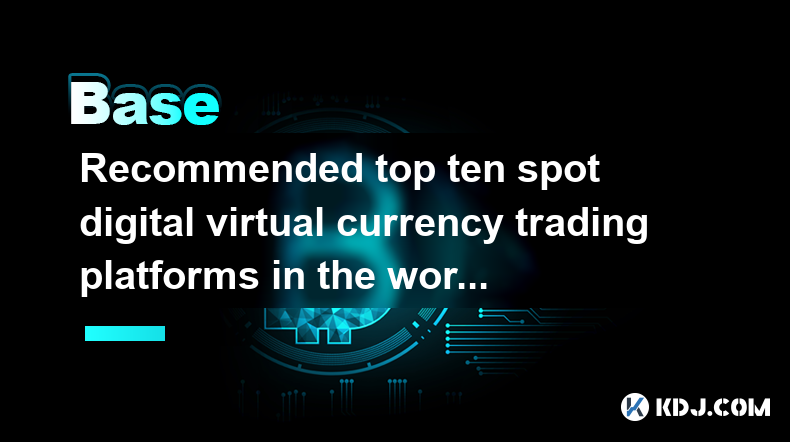-
 Bitcoin
Bitcoin $87,915.1013
4.01% -
 Ethereum
Ethereum $1,626.0336
3.05% -
 Tether USDt
Tether USDt $1.0002
0.03% -
 XRP
XRP $2.1225
3.25% -
 BNB
BNB $603.9394
2.51% -
 Solana
Solana $138.6104
1.03% -
 USDC
USDC $1.0000
0.01% -
 Dogecoin
Dogecoin $0.1612
4.65% -
 TRON
TRON $0.2431
-0.84% -
 Cardano
Cardano $0.6407
4.19% -
 Chainlink
Chainlink $13.4436
2.16% -
 Avalanche
Avalanche $20.5554
5.48% -
 UNUS SED LEO
UNUS SED LEO $9.0885
-2.49% -
 Stellar
Stellar $0.2597
7.37% -
 Toncoin
Toncoin $3.0010
0.25% -
 Shiba Inu
Shiba Inu $0.0...01257
1.68% -
 Sui
Sui $2.2420
6.60% -
 Hedera
Hedera $0.1711
4.33% -
 Bitcoin Cash
Bitcoin Cash $344.5133
3.21% -
 Polkadot
Polkadot $3.9101
1.15% -
 Hyperliquid
Hyperliquid $18.1893
5.38% -
 Litecoin
Litecoin $80.0892
5.05% -
 Bitget Token
Bitget Token $4.4777
1.97% -
 Dai
Dai $1.0000
0.00% -
 Ethena USDe
Ethena USDe $0.9994
0.01% -
 Pi
Pi $0.6362
1.91% -
 Monero
Monero $214.2887
-0.67% -
 Uniswap
Uniswap $5.4298
4.03% -
 Pepe
Pepe $0.0...07950
6.54% -
 Aptos
Aptos $5.1342
2.79%
What is "staking"? How does it bring income?
Staking in crypto involves locking up coins to validate transactions and earn rewards, with risks like slashing penalties and smart contract vulnerabilities.
Mar 28, 2025 at 01:42 pm

Understanding Crypto Staking: A Deep Dive
Staking in the cryptocurrency world is a process analogous to "proof-of-stake" (PoS) consensus mechanisms. Unlike proof-of-work (PoW) systems like Bitcoin which rely on energy-intensive mining, PoS networks validate transactions and add new blocks to the blockchain by selecting validators based on the amount of cryptocurrency they "stake." This means locking up a certain amount of their coins in a designated wallet. The more cryptocurrency you stake, the higher your chances of being selected as a validator. This is fundamentally different from lending or other investment strategies.
How Staking Generates Income
The primary way staking generates income is through rewards. Validators who successfully validate transactions and add blocks to the blockchain are rewarded with newly minted cryptocurrency or transaction fees. The amount of reward you receive is directly proportional to the amount of cryptocurrency you stake and the network's overall activity. The more you stake, the higher your chances of receiving rewards, and the higher your potential income. However, it's crucial to understand that staking isn't guaranteed income; it's a probabilistic system.
Different Types of Staking
There are several variations in how staking operates across different cryptocurrencies. Some platforms offer delegated staking, where users delegate their coins to a larger staking pool managed by a professional validator. This reduces the technical overhead for smaller stakers but comes with the potential risk of validator misconduct. Others allow for solo staking, where users run their own validator node, offering greater control but requiring significant technical expertise and hardware resources. Finally, liquid staking allows users to stake their tokens while still maintaining liquidity, typically through the issuance of derivative tokens representing their staked assets.
Factors Affecting Staking Rewards
Several factors influence the rewards you receive from staking. The annual percentage rate (APR) is a crucial metric, representing the estimated annual return on your staked assets. However, APRs can fluctuate based on network congestion, the number of validators, and the overall demand for the cryptocurrency. The network's inflation rate also plays a role; higher inflation often leads to higher staking rewards as more coins are created to distribute. Finally, the validator's commission (if delegating) reduces your overall earnings.
Choosing a Staking Platform
Selecting a secure and reputable staking platform is vital. Before committing your cryptocurrency, thoroughly research the platform's reputation, security measures, and track record. Look for platforms with transparent fee structures and a proven history of paying out rewards reliably. Consider factors like the platform's user interface, customer support, and the range of supported cryptocurrencies. Never entrust your cryptocurrency to an unknown or untrusted platform. Always prioritize security.
Risks Associated with Staking
While staking can be profitable, it's essential to acknowledge the associated risks. Impermanent loss can occur in liquid staking if the price of the staked asset fluctuates significantly. Slashing penalties can be imposed on validators who misbehave or violate network rules, resulting in a loss of staked funds. Moreover, smart contract vulnerabilities within the staking platform itself could lead to the loss of your assets. Always be aware of these risks and diversify your investments accordingly.
Understanding the Technical Aspects of Staking
Participating in staking often requires a basic understanding of blockchain technology and cryptography. You need a secure wallet capable of interacting with the chosen cryptocurrency's blockchain. For solo staking, you'll need to run and maintain a node, requiring technical expertise and sufficient hardware resources. Delegated staking simplifies this process but introduces a reliance on a third-party validator. Understanding the technical details of the specific cryptocurrency and its staking mechanism is crucial for informed participation.
Maximizing Staking Rewards
Maximizing your staking rewards involves several strategies. Staking larger amounts generally leads to higher rewards, but this requires significant capital. Choosing cryptocurrencies with high APRs can improve your returns, but this requires thorough research and understanding of the associated risks. Diversifying across multiple staking platforms and cryptocurrencies can mitigate risk and potentially enhance overall returns. Continuously monitoring your staked assets and the performance of the chosen platform is also crucial.
Security Considerations for Staking
Security is paramount when staking cryptocurrency. Use only reputable and secure wallets designed for staking. Enable two-factor authentication (2FA) wherever possible. Keep your private keys secure and never share them with anyone. Regularly update your wallet software and operating system to patch security vulnerabilities. Be wary of phishing scams and malicious websites attempting to steal your credentials. Always verify the legitimacy of any communication related to your staked assets.
The Future of Staking
Staking is becoming increasingly popular as a passive income strategy within the cryptocurrency space. As more blockchains adopt PoS consensus mechanisms, the opportunities for staking are likely to expand. However, the landscape is constantly evolving, with new platforms and cryptocurrencies emerging regularly. Staying informed about the latest developments and technological advancements is crucial for navigating this dynamic environment. Continuous learning and adaptation are key to successfully participating in the staking ecosystem.
Frequently Asked Questions
Q: Is staking risky?
A: Yes, staking involves risks such as slashing penalties, smart contract vulnerabilities, and impermanent loss (in liquid staking). Thorough research and careful selection of platforms are crucial to mitigate these risks.
Q: How much can I earn from staking?
A: The potential earnings from staking vary significantly depending on the cryptocurrency, the APR, the amount staked, and other factors. There's no guaranteed return.
Q: What hardware do I need for staking?
A: For delegated staking, minimal hardware is required. Solo staking, however, demands significant computing power and storage depending on the cryptocurrency.
Q: How do I choose a staking platform?
A: Choose a platform with a strong reputation, transparent fees, robust security measures, and positive user reviews. Always verify the platform's legitimacy before entrusting your funds.
Q: Can I unstake my cryptocurrency at any time?
A: The unstaking period varies depending on the cryptocurrency and platform. Some allow immediate unstaking, while others have a lock-up period. Check the specific terms and conditions.
Disclaimer:info@kdj.com
The information provided is not trading advice. kdj.com does not assume any responsibility for any investments made based on the information provided in this article. Cryptocurrencies are highly volatile and it is highly recommended that you invest with caution after thorough research!
If you believe that the content used on this website infringes your copyright, please contact us immediately (info@kdj.com) and we will delete it promptly.
- Atok Partners with Bitgert to Advance Infrastructure and Advertising Economy in Web3 World
- 2025-04-21 23:00:13
- Pi Network (PI) Coin Could Be the Next Cryptocurrency to Launch an Exchange Traded Fund (ETF)
- 2025-04-21 23:00:13
- Strategy, the world's largest corporate Bitcoin holder, has purchased 6,556 BTC for $555.8 million
- 2025-04-21 22:55:13
- Bitcoin (BTC) Price Prediction: Arthur Hayes Hints at a Final Opportunity to Buy BTC Under $100K
- 2025-04-21 22:55:13
- Binance Adds ZORA to Spotlight Projects on Binance Alpha Alongside Other Names
- 2025-04-21 22:50:12
- Bitcoin (BTC) Price Prediction: BTC Surges Nearly 5%
- 2025-04-21 22:50:12
Related knowledge

Recommended top ten spot digital virtual currency trading platforms in the world in 2025
Apr 21,2025 at 05:15pm
Recommended top ten spot digital virtual currency trading platforms in the world in 2025 1. Binance As the world's premier cryptocurrency trading platform, Binance is known for its extensive trading pairs and efficient trading services. Its features include: High Liquidity : Binance has huge trading volumes, ensuring users can trade at the best pric...

Ranking of top ten virtual currency trading apps in the currency circle (the latest authoritative list in 2025)
Apr 21,2025 at 10:28pm
The top ten virtual currency trading apps in the 2025 cryptocurrency circle are listed as follows: 1. Binance Binance is one of the world's leading cryptocurrency trading platforms, known for its efficient trading system and extensive currency support. Binance's user interface is designed with simplicity and is suitable for beginners and profess...

What are the digital currency APP trading software in 2025? Ranking of the top ten digital virtual currency trading apps
Apr 21,2025 at 08:42pm
Ranking of the top ten digital virtual currency trading apps in 2025 1. Binance Binance continues to maintain its position as the world's leading digital currency trading platform in 2025. Its advantages include: Efficient trading volume : Binance has top trading volumes around the world, ensuring users can trade efficiently at any time. Diverse tra...

The top ten virtual currency trading app professional list of the three major virtual currency trading platforms in the currency circle in 2025
Apr 21,2025 at 11:21pm
Three virtual currency trading platforms in the currency circle 1. Binance As one of the world's leading cryptocurrency trading platforms, Binance has rapidly risen since its establishment in 2017 due to its huge trading volume and extensive user base. Binance's success stems from its rich trading pairs and high liquidity, but also from its cont...

Ranking of the top ten cryptocurrency trading apps in the currency circle in 2025
Apr 21,2025 at 08:49pm
Ranking of the three major virtual currency trading applications in the currency circle Binance: The world's leading cryptocurrency trading platform Binance has always been one of the pioneers in the cryptocurrency trading world. With its huge trading volume and a wide user base, it has become one of the most popular trading platforms in the world. ...

Top 10 best virtual currency trading platforms in the world ranked latest rankings for 2025
Apr 21,2025 at 10:00pm
Top 10 Most Popular Virtual Currency Trading Platforms in the World 1.Binance Binance is one of the world's leading cryptocurrency trading platforms, and is popular for its high liquidity and rich trading pairs. Binance supports over 500 cryptocurrencies and provides fiat currency deposit and cash withdrawal services. The platform interface is user-...

Recommended top ten spot digital virtual currency trading platforms in the world in 2025
Apr 21,2025 at 05:15pm
Recommended top ten spot digital virtual currency trading platforms in the world in 2025 1. Binance As the world's premier cryptocurrency trading platform, Binance is known for its extensive trading pairs and efficient trading services. Its features include: High Liquidity : Binance has huge trading volumes, ensuring users can trade at the best pric...

Ranking of top ten virtual currency trading apps in the currency circle (the latest authoritative list in 2025)
Apr 21,2025 at 10:28pm
The top ten virtual currency trading apps in the 2025 cryptocurrency circle are listed as follows: 1. Binance Binance is one of the world's leading cryptocurrency trading platforms, known for its efficient trading system and extensive currency support. Binance's user interface is designed with simplicity and is suitable for beginners and profess...

What are the digital currency APP trading software in 2025? Ranking of the top ten digital virtual currency trading apps
Apr 21,2025 at 08:42pm
Ranking of the top ten digital virtual currency trading apps in 2025 1. Binance Binance continues to maintain its position as the world's leading digital currency trading platform in 2025. Its advantages include: Efficient trading volume : Binance has top trading volumes around the world, ensuring users can trade efficiently at any time. Diverse tra...

The top ten virtual currency trading app professional list of the three major virtual currency trading platforms in the currency circle in 2025
Apr 21,2025 at 11:21pm
Three virtual currency trading platforms in the currency circle 1. Binance As one of the world's leading cryptocurrency trading platforms, Binance has rapidly risen since its establishment in 2017 due to its huge trading volume and extensive user base. Binance's success stems from its rich trading pairs and high liquidity, but also from its cont...

Ranking of the top ten cryptocurrency trading apps in the currency circle in 2025
Apr 21,2025 at 08:49pm
Ranking of the three major virtual currency trading applications in the currency circle Binance: The world's leading cryptocurrency trading platform Binance has always been one of the pioneers in the cryptocurrency trading world. With its huge trading volume and a wide user base, it has become one of the most popular trading platforms in the world. ...

Top 10 best virtual currency trading platforms in the world ranked latest rankings for 2025
Apr 21,2025 at 10:00pm
Top 10 Most Popular Virtual Currency Trading Platforms in the World 1.Binance Binance is one of the world's leading cryptocurrency trading platforms, and is popular for its high liquidity and rich trading pairs. Binance supports over 500 cryptocurrencies and provides fiat currency deposit and cash withdrawal services. The platform interface is user-...
See all articles






















































































